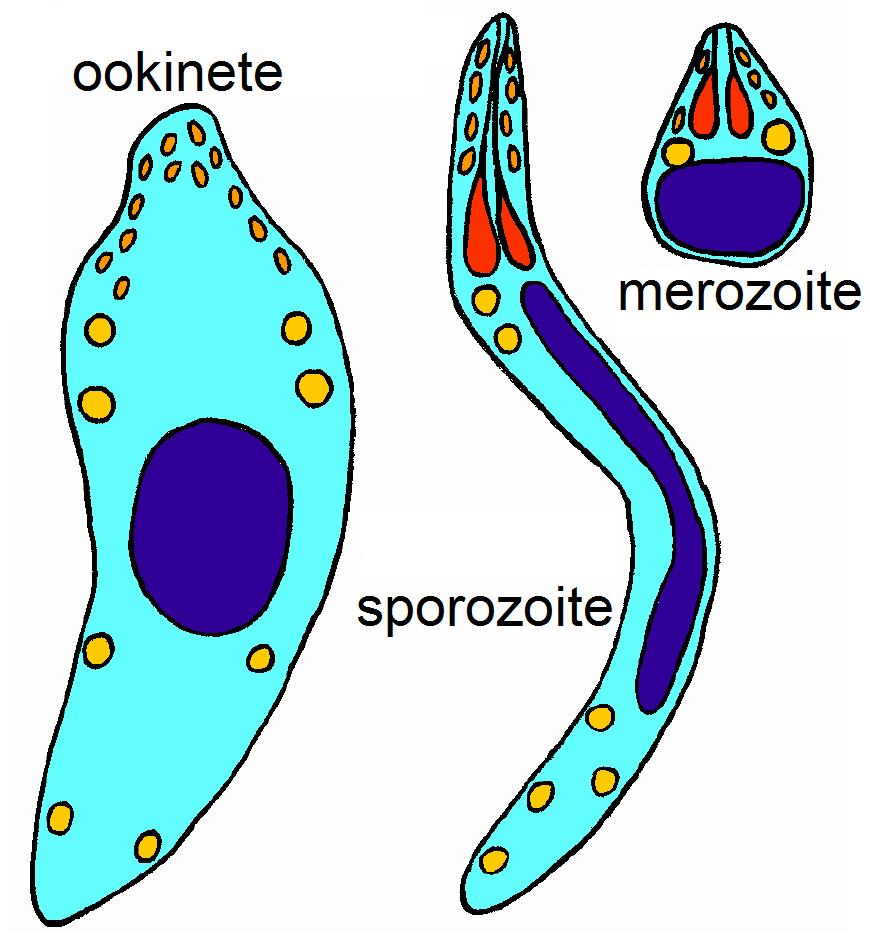|
Karyolysus
''Karyolysus'' is a genus of coccidia. With the exception of ''K. sonomae'' whose vertebrate host is the yellow-legged frog ('' Rana boylii boylii''), species in this genus only infect lizards of the genus ''Lacerta''. History The genus was created by Labbe in 1894 for those species of sporozoans that fragmented the host nucleus. Reichenow in 1921 established that this property was of dubious taxonomic value. He proposed a different set of criteria for inclusion in this genus and these are the one currently in use. The type species is ''Karyolysus lacertae'' . Characteristics of the genus Schizogeny occurs in the endothelial cells Gametogony occurs in the erythrocytes after their penetration by the merozoites. Differentiation from the genus ''Haemogregarina'' may be difficult as in both genera gametocytogenesis occurs in the erythrocytes and have similar morphology. They can be distinguished on the location of schizogony: In ''Karyolysus'' this occurs in the endothelial cell ... [...More Info...] [...Related Items...] OR: [Wikipedia] [Google] [Baidu] |
Sporoblast
{{Short pages monitor ... [...More Info...] [...Related Items...] OR: [Wikipedia] [Google] [Baidu] |
Mitosis
In cell biology, mitosis () is a part of the cell cycle in which replicated chromosomes are separated into two new nuclei. Cell division by mitosis gives rise to genetically identical cells in which the total number of chromosomes is maintained. Therefore, mitosis is also known as equational division. In general, mitosis is preceded by S phase of interphase (during which DNA replication occurs) and is often followed by telophase and cytokinesis; which divides the cytoplasm, organelles and cell membrane of one cell into two new cells containing roughly equal shares of these cellular components. The different stages of mitosis altogether define the mitotic (M) phase of an animal cell cycle—the division of the mother cell into two daughter cells genetically identical to each other. The process of mitosis is divided into stages corresponding to the completion of one set of activities and the start of the next. These stages are preprophase (specific to plant cells), p ... [...More Info...] [...Related Items...] OR: [Wikipedia] [Google] [Baidu] |
Blood
Blood is a body fluid in the circulatory system of humans and other vertebrates that delivers necessary substances such as nutrients and oxygen to the cells, and transports metabolic waste products away from those same cells. Blood in the circulatory system is also known as ''peripheral blood'', and the blood cells it carries, ''peripheral blood cells''. Blood is composed of blood cells suspended in blood plasma. Plasma, which constitutes 55% of blood fluid, is mostly water (92% by volume), and contains proteins, glucose, mineral ions, hormones, carbon dioxide (plasma being the main medium for excretory product transportation), and blood cells themselves. Albumin is the main protein in plasma, and it functions to regulate the colloidal osmotic pressure of blood. The blood cells are mainly red blood cells (also called RBCs or erythrocytes), white blood cells (also called WBCs or leukocytes) and platelets (also called thrombocytes). The most abundant cells in verte ... [...More Info...] [...Related Items...] OR: [Wikipedia] [Google] [Baidu] |
Ookinete
Apicomplexans, a group of intracellular parasites, have life cycle stages that allow them to survive the wide variety of environments they are exposed to during their complex life cycle. Each stage in the life cycle of an apicomplexan organism is typified by a ''cellular variety'' with a distinct morphology and biochemistry. Not all apicomplexa develop all the following cellular varieties and division methods. This presentation is intended as an outline of a hypothetical generalised apicomplexan organism. Methods of asexual replication Apicomplexans (sporozoans) replicate via ways of multiple fission (also known as schizogony). These ways include , and , although the latter is sometimes referred to as schizogony, despite its general meaning. Merogony is an asexually reproductive process of apicomplexa. After infecting a host cell, a trophozoite ( see glossary below) increases in size while repeatedly replicating its nucleus and other organelles. During this process, the orga ... [...More Info...] [...Related Items...] OR: [Wikipedia] [Google] [Baidu] |
Zygote
A zygote (, ) is a eukaryotic cell formed by a fertilization event between two gametes. The zygote's genome is a combination of the DNA in each gamete, and contains all of the genetic information of a new individual organism. In multicellular organisms, the zygote is the earliest developmental stage. In humans and most other anisogamous organisms, a zygote is formed when an egg cell and sperm cell come together to create a new unique organism. In single-celled organisms, the zygote can divide asexually by mitosis to produce identical offspring. German zoologists Oscar and Richard Hertwig made some of the first discoveries on animal zygote formation in the late 19th century. Humans In human fertilization, a released ovum (a haploid secondary oocyte with replicate chromosome copies) and a haploid sperm cell (male gamete) combine to form a single diploid cell called the zygote. Once the single sperm fuses with the oocyte, the latter completes the division of the ... [...More Info...] [...Related Items...] OR: [Wikipedia] [Google] [Baidu] |


